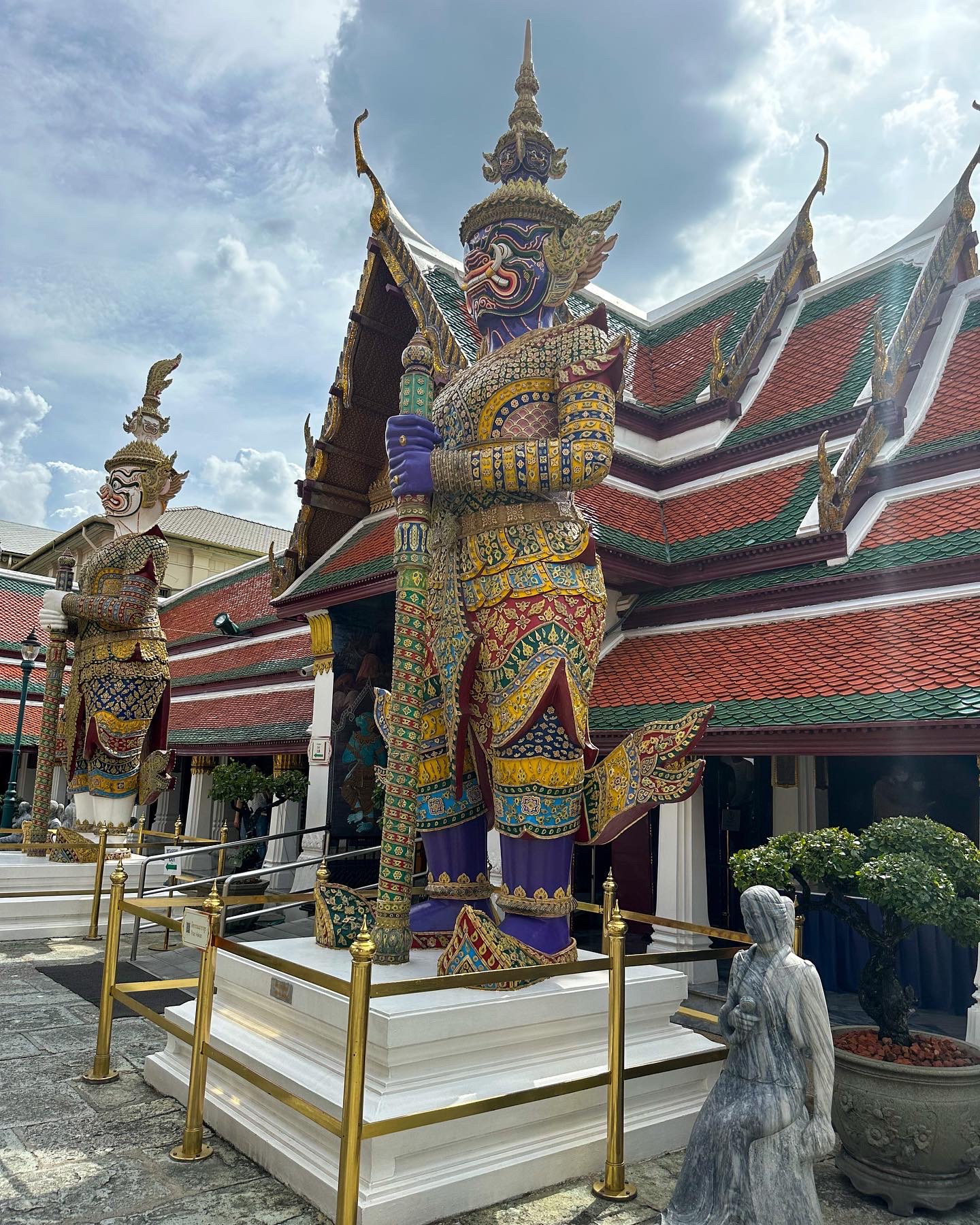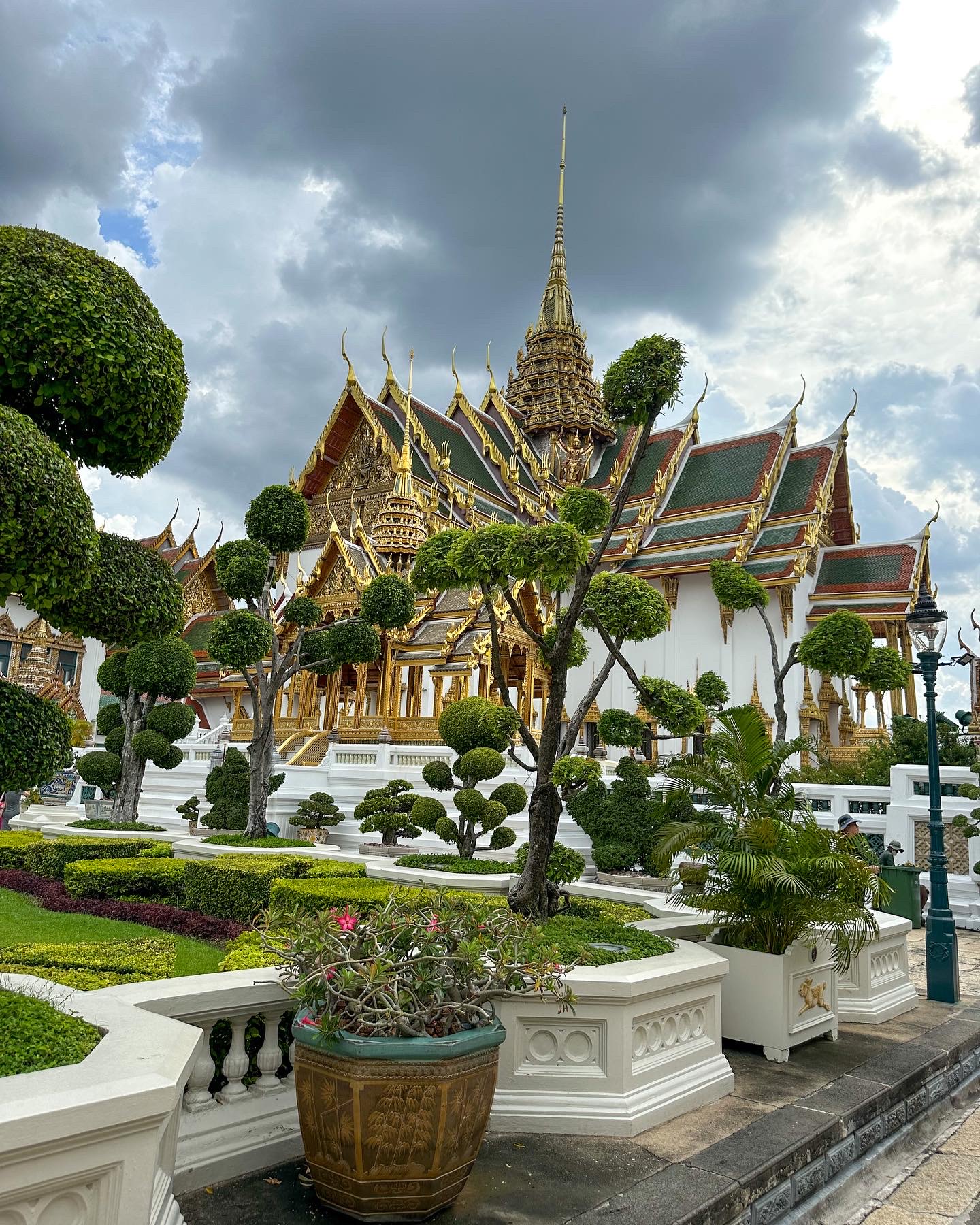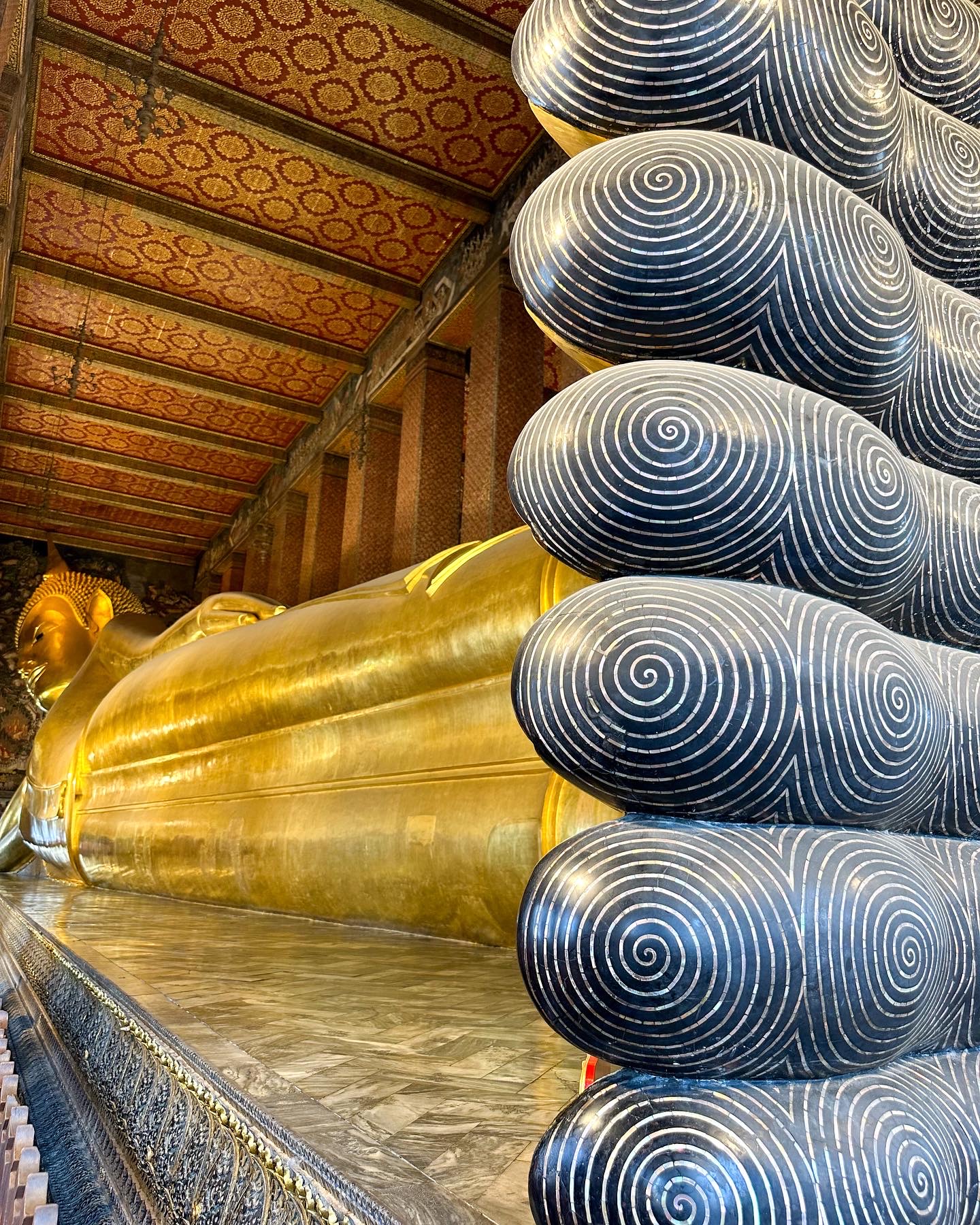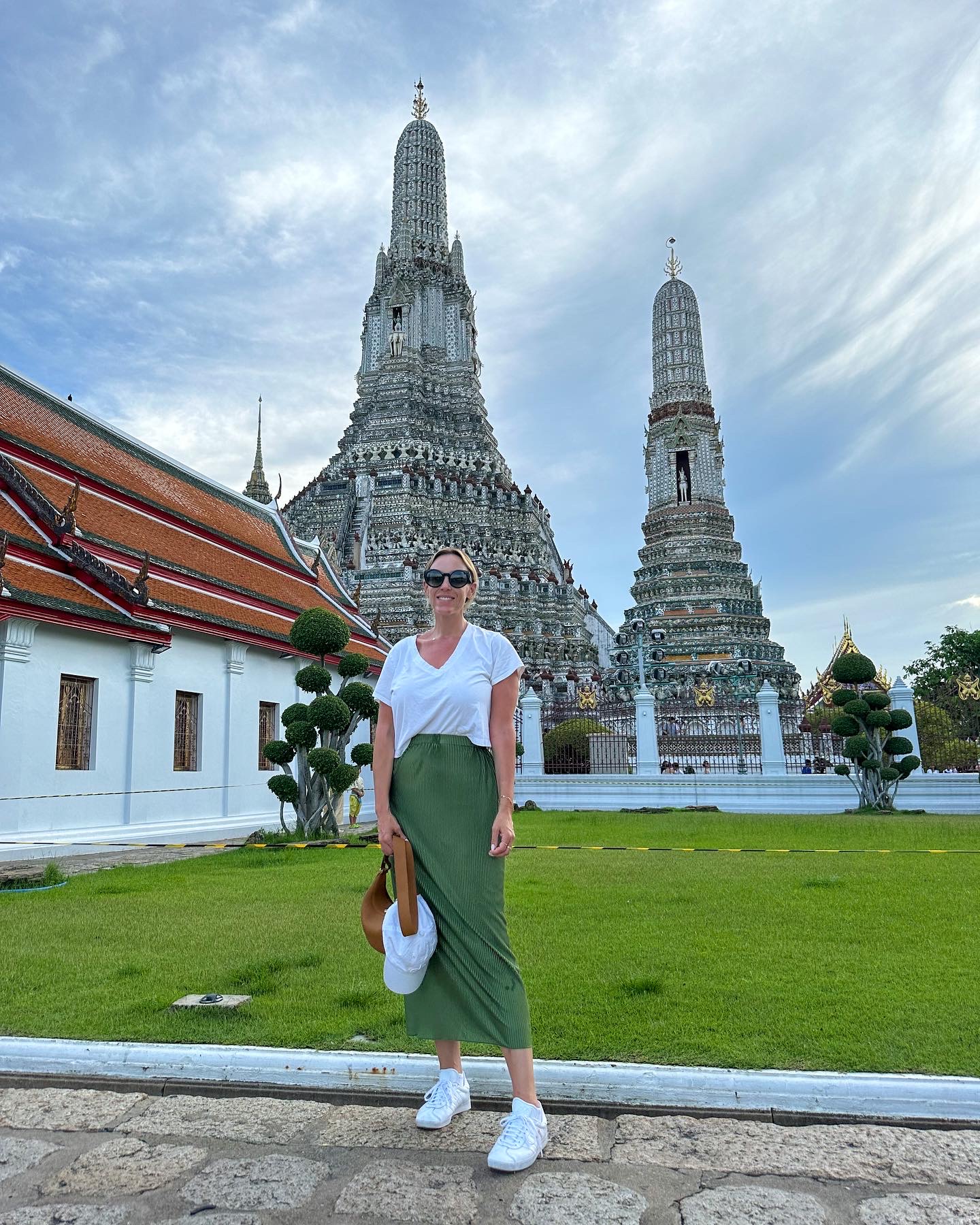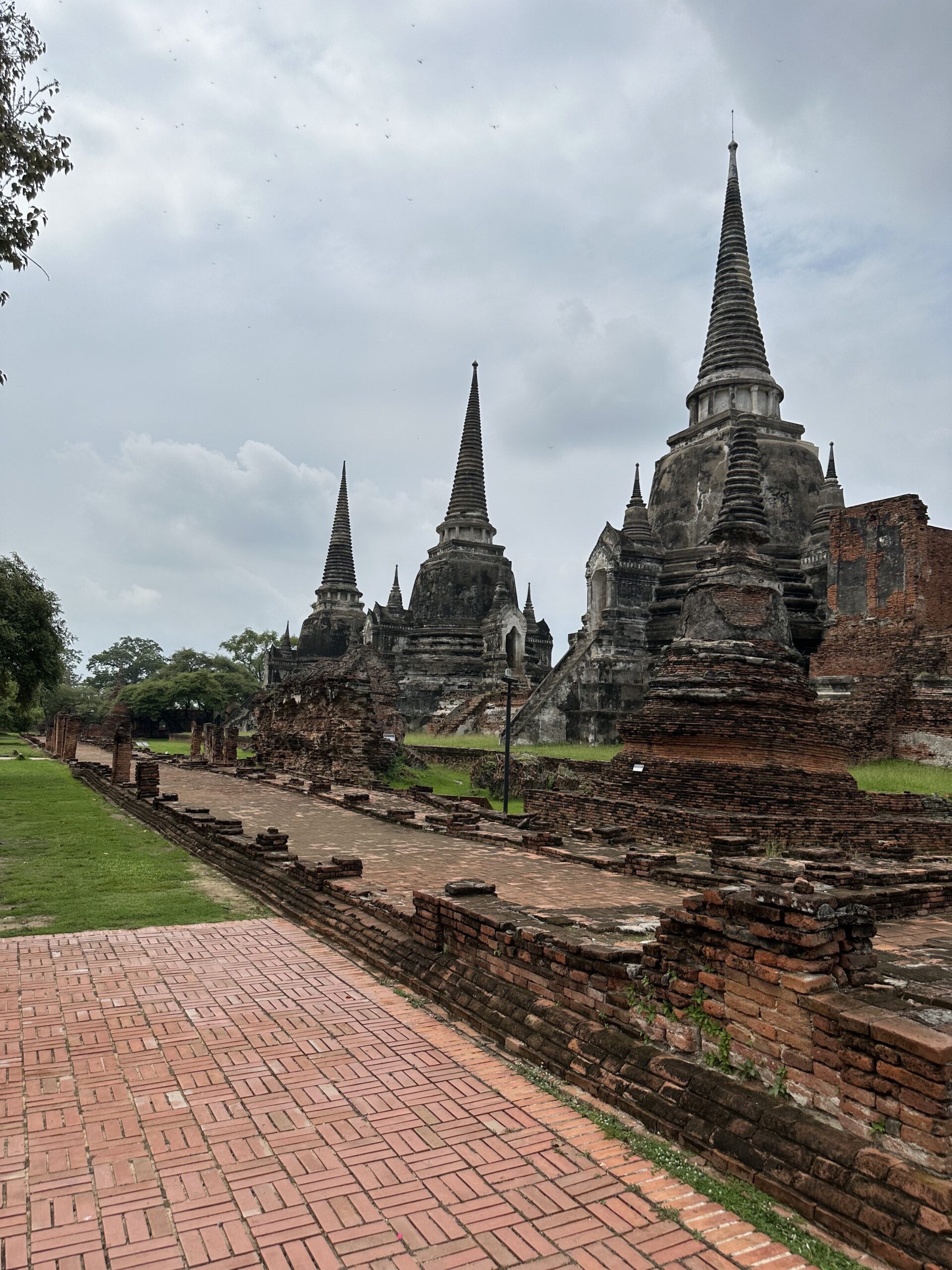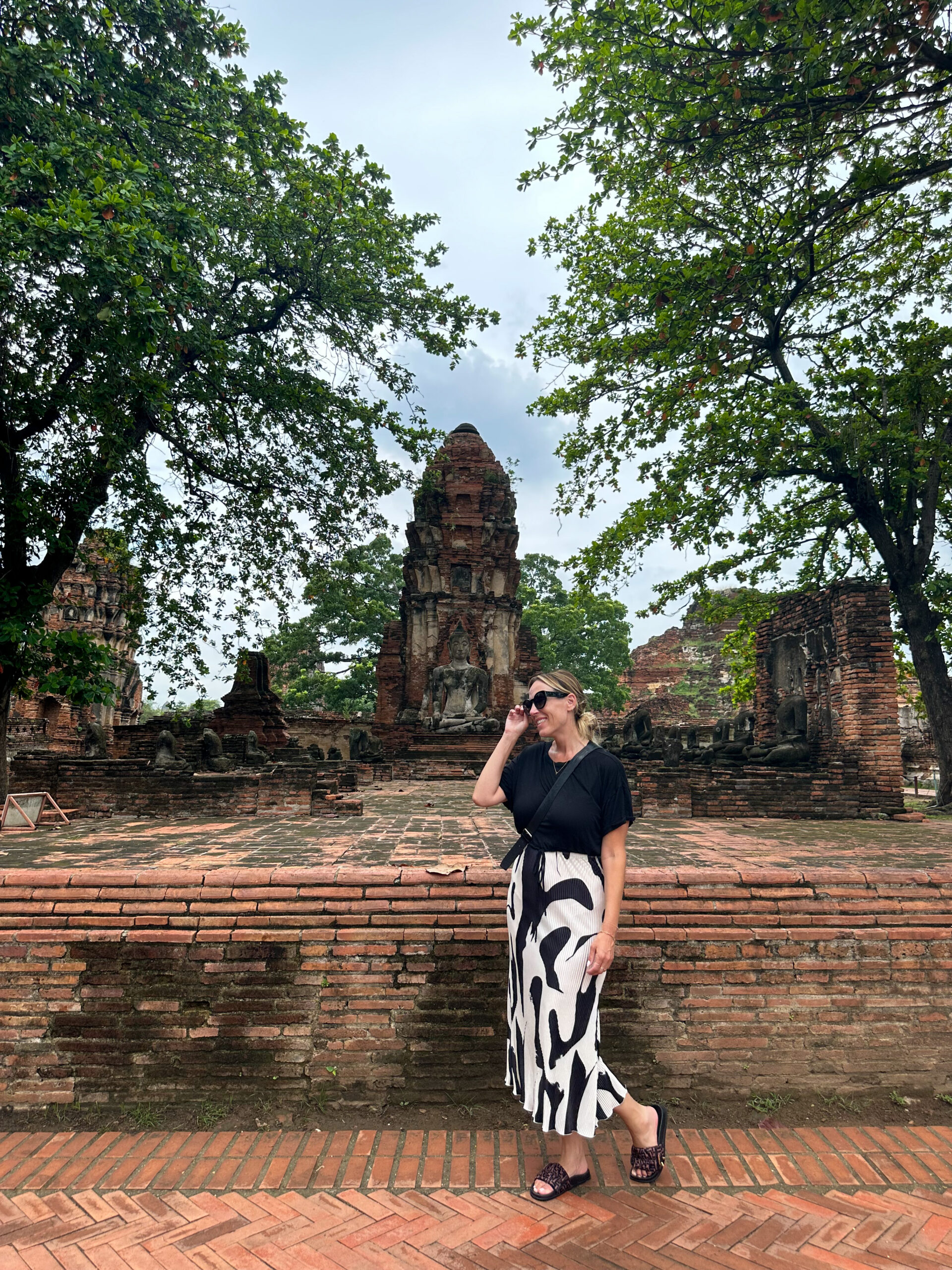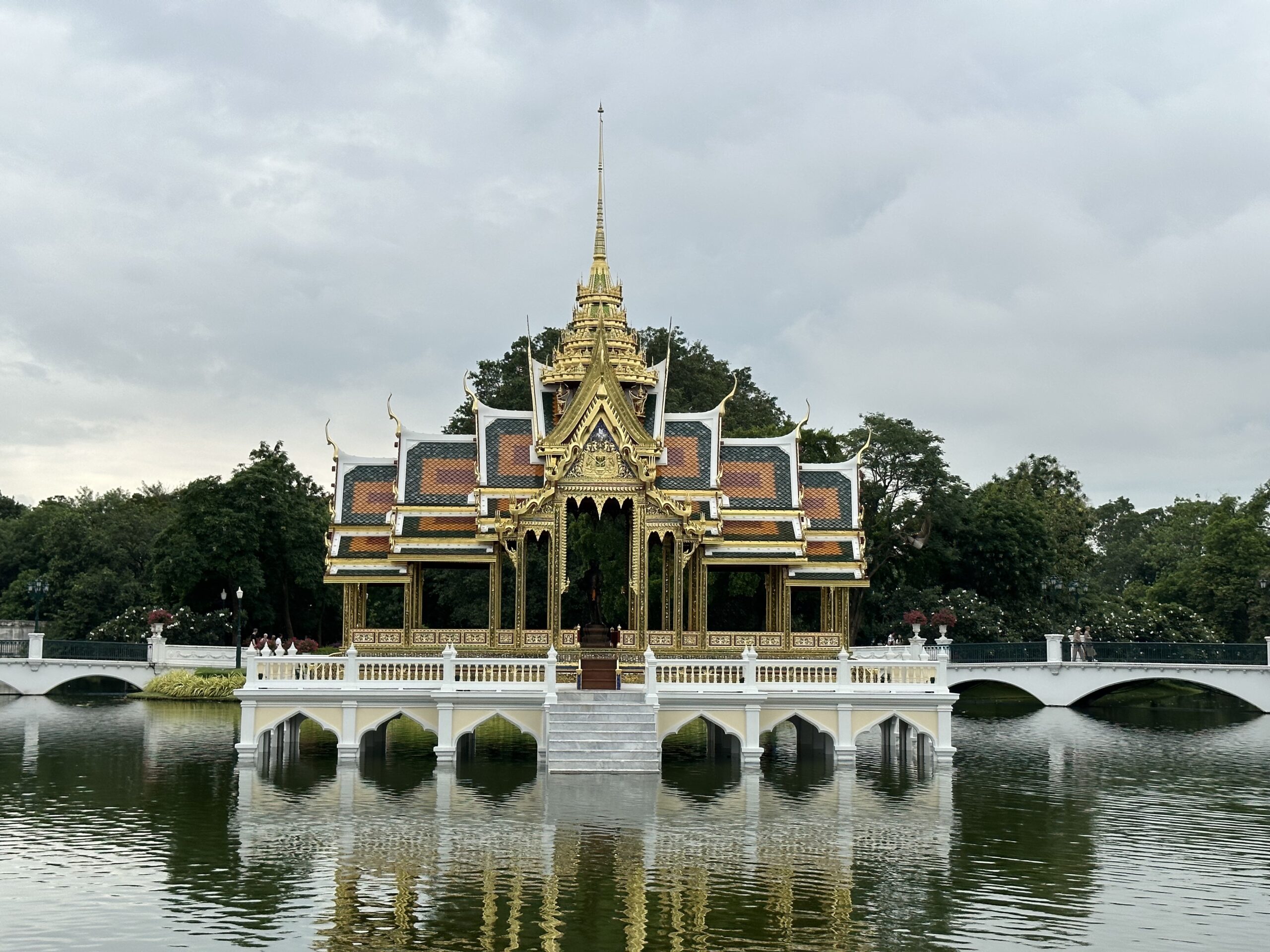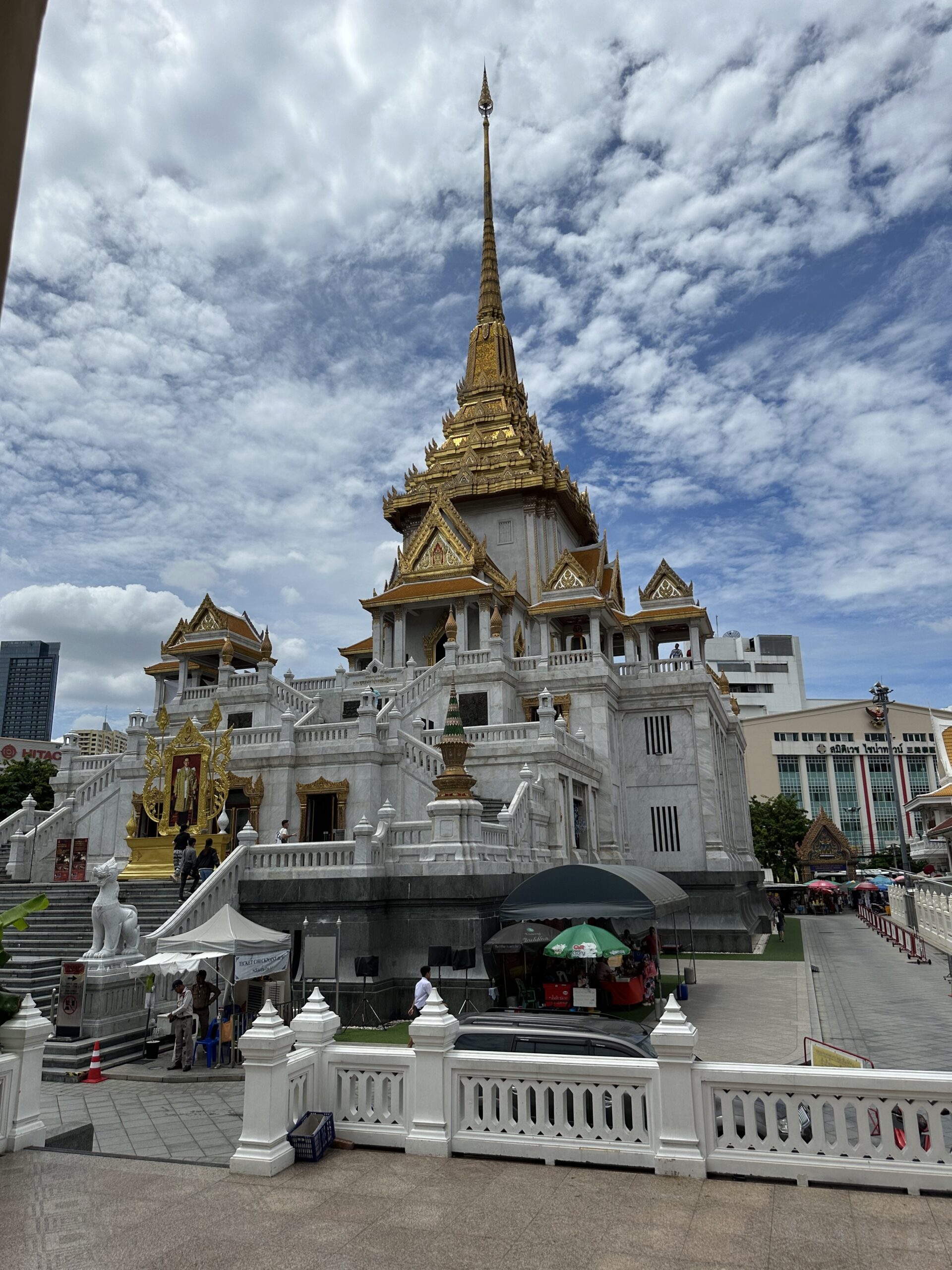Thailand’s Temples, History, and Must-Visit Sites: Exploring the Spiritual Marvels
When many people think of Thailand, they may envision the street markets, pristine beaches, and mouthwatering street food. However, one of the things that stood out to me most during my two weeks in Thailand was all of the architectural wonders we experienced. In this blog post, I will share the history of Thailand’s temples and highlight the major ones in Bangkok, Ayutthaya, and other regions of the country.
Thailand’s Temples Legacy
Before I describe specific temples, it’s crucial to understand the historical and cultural context in which these magnificent structures were created. Thailand’s temple culture is deeply intertwined with its Buddhist heritage, which dates back over a thousand years. The kingdom’s religious traditions have shaped its art, architecture, and way of life.
Thailand, or Siam as it was historically known, embraced Buddhism in the 3rd century BC. Over the centuries, various Thai dynasties, including the Khmer, Sukhothai, and Ayutthaya, played pivotal roles in advancing the Buddhist faith and temple construction. As a result, Thailand boasts a diverse collection of temples, each representing the aesthetics and beliefs of its era.
Bangkok Temples
Bangkok, Thailand’s vibrant capital, is a city where modernity seamlessly merges with tradition. Amidst its bustling streets and high-rises, you’ll discover a plethora of awe-inspiring temples that have stood the test of time.
1. Wat Pho (Temple of the Reclining Buddha)
One of Bangkok’s most famous temples, Wat Pho, is renowned for its colossal reclining Buddha, measuring an impressive 46 meters in length. This temple also serves as Thailand’s first university and a hub for traditional Thai medicine and massage. The intricate architecture, vibrant tiles, and serene courtyards make Wat Pho an unforgettable experience for all visitors.
2. Wat Arun (Temple of Dawn)
Situated on the banks of the Chao Phraya River, Wat Arun, also known as the Temple of Dawn, is an iconic structure characterized by its towering prang (Khmer-style tower). Clad in porcelain and seashells, the temple shines brilliantly in the sun, making it a picturesque sight during sunrise and sunset. Climb the steep steps to the top for panoramic views of the city.
3. Wat Saket (Golden Mount)
Perched atop a man-made hill, the Golden Mount offers breathtaking panoramic views of the city. This temple is famous for its golden chedi (stupa), which houses a relic of Buddha. The annual temple fair held here in November is a lively, cultural celebration. We did not visit this temple while I was in Bangkok, but it looks really cool.
4. Wat Benchamabophit (Marble Temple)
Often referred to as the Marble Temple, Wat Benchamabophit is an architectural gem constructed from white Carrara marble. The temple features intricate carvings and a beautiful main prayer hall. The Marble Temple is one of the most elegant temples in Bangkok, reflecting a blend of Thai and European design elements.
5. Wat Suthat (The Giant Swing Temple)
Wat Suthat houses the massive red Giant Swing (Sao Chingcha) in front of its main entrance. The temple has a serene atmosphere, exquisite murals, and beautifully carved teakwood door panels. This is one example of Thailand’s temples intricate craftsmanship.
Ayutthaya’s Ancient Temples
Traveling north from Bangkok, you’ll encounter Ayutthaya, the ancient capital of Thailand. Here, you can explore the historical ruins of temples that once stood as powerful symbols of the Ayutthaya Kingdom’s prosperity. By far, Ayutthaya’s temples were my favorite. I absolutely loved the rich history and ancient ruins feeling you get in Ayutthaya. It was definitely worth the hour’s drive from Bangkok.
1. Wat Mahathat
Wat Mahathat is one of the most significant temples in Ayutthaya. The most unique part of this temple is the Buddha head entwined in the roots of a banyan tree. This image has become emblematic of Ayutthaya’s historical significance and offers a fascinating glimpse into the passage of time.
2. Wat Ratchaburana
Wat Ratchaburana has impressive prang and extensive underground chambers, housing ancient relics and treasures. The temple offers a unique opportunity to explore below ground and discover the history that lies hidden beneath the surface.
3. Wat Phra Si Sanphet
Wat Phra Si Sanphet served as the royal temple of the Ayutthaya kings. The three imposing chedis (stupas) were a symbol of the kingdom’s power and wealth. Today, they stand as remnants of the past, preserving the grandeur of Ayutthaya’s historical might.
Thailand’s Temples: Beyond Bangkok and Ayutthaya
While Bangkok and Ayutthaya offer an abundance of temple experiences, Thailand’s temple culture extends far beyond these two locations. Here are some more remarkable temples in different regions of the country.
1. Wat Phra Singh, Chiang Mai
Wat Phra Singh is located in the heart of Chiang Mai. Also, Wat Phra Singh has stunning Lanna-style architecture and the highly revered Phra Singh Buddha image. The temple complex also houses a small museum with various artifacts.
2. Wat Rong Khun (White Temple), Chiang Rai
The White Temple in Chiang Rai is a contemporary masterpiece that stands out for its snow-white exterior adorned with intricate mirror work. It is an artistic and spiritual marvel designed by the renowned Thai artist Chalermchai Kositpipat.
3. Wat Phra That Doi Suthep, Chiang Mai
Perched on a mountain in Chiang Mai, Wat Phra That Doi Suthep offers breathtaking panoramic views of the city and is a revered pilgrimage site. The temple’s golden chedi and intricate architecture are a testament to the Lanna style prevalent in Northern Thailand.
Thailand’s Temples: Conclusion
Thailand’s temples stand as enduring monuments to the nation’s spiritual and artistic legacy. These places of worship are not only awe-inspiring in their beauty and design but also hold profound cultural and religious significance for the Thai people. The history of Thailand’s temples is a testament to the nation’s continuous devotion to Buddhism and the preservation of its architectural heritage. Over the centuries, these temples have not only served as centers of worship but also as centers of education, art, and culture.
Thailand’s temples are more than just tourist attractions; they are living testaments to the enduring spirit of a nation deeply rooted in its religious and cultural traditions. From the bustling streets of Bangkok to the ancient ruins of Ayutthaya and the serene landscapes of Chiang Mai, these temples offer a glimpse into the heart and soul of Thailand. Whether you seek spiritual enlightenment, historical exploration, or simply a moment of quiet reflection, Thailand’s temples are the perfect destination.
If you’re looking for more Thailand content, you can read about my time in Krabi here and my trip to the Elephant Sanctuary here.

